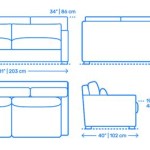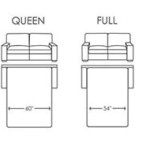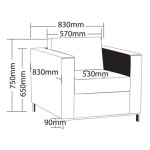How To Refill Feather Sofa Cushions
Feather-filled sofa cushions offer a luxurious and comfortable seating experience, but over time, feathers compress, leading to a loss of loft and support. Refilling these cushions can restore their comfort and extend their lifespan, saving the cost of replacements. This process might seem daunting, but with the right tools and techniques, it's a manageable DIY project.
Gathering Necessary Materials
Before beginning the refilling process, assembling the necessary materials ensures a smooth and efficient workflow. These include a seam ripper, a measuring tape or ruler, new feather filling, a funnel (optional, but highly recommended), heavy-duty thread matching the cushion cover's color, a sewing needle or sewing machine, and scissors. A flat, clean surface for working is also recommended.
Opening the Cushion Cover
Carefully examine the cushion cover to locate the existing seam. Using a seam ripper, gently remove the stitches along one side of the cushion. It's crucial to avoid cutting the fabric itself during this process. Open the seam just enough to access the existing feather filling. Taking pictures of the original seam before removing stitches can be helpful for later resewing.
Assessing the Existing Filling
Once the cushion cover is open, assess the condition of the existing feather filling. If the feathers are simply compressed, adding new filling may suffice. However, if the feathers are broken down, brittle, or have an unpleasant odor, replacing the entire filling is recommended for optimal comfort and hygiene.
Adding New Feather Filling
Using a funnel can significantly simplify adding new feather filling and minimize mess. Insert the funnel's narrow end into the cushion opening and pour the desired amount of new feathers into the cushion. If a funnel is unavailable, carefully pour the feathers directly into the cushion, taking care to prevent spillage. Distribute the filling evenly within the cushion, paying attention to corners and edges.
Determining the Correct Fill Amount
The amount of feather filling required depends on personal preference and the desired level of firmness. Start by adding a smaller amount of filling and then test the cushion’s comfort. Add more feathers incrementally until the desired loft and support are achieved. Overfilling can stress the seams and create an uncomfortable, overly firm cushion.
Closing the Cushion Cover
After achieving the desired fill, carefully align the edges of the opened seam. Using a strong thread that matches the cushion cover, stitch the seam closed using a sewing needle or a sewing machine. Ensure the stitches are tight and secure to prevent feathers from escaping. Replicate the original seam as closely as possible for a professional finish.
Fluffing and Shaping the Cushion
Once the seam is closed, fluff and shape the cushion by gently kneading and patting it. This helps distribute the filling evenly and restore the cushion's original shape. Regularly fluffing feather-filled cushions helps maintain their loft and comfort over time.
Caring for Refilled Cushions
To extend the life of your refilled cushions, regular maintenance is essential. Fluffing the cushions daily and airing them out periodically can help prevent feather compression and maintain their hygiene. Protecting cushions with removable, washable covers also minimizes wear and tear and simplifies cleaning.

How To Maintain Feather Filled Couches

How To Stuff Saggy Couch Cushions Under 50 Thetarnishedjewelblog

How Do I Fluff My Feather Sofa Q Living Furniture

How Do I Fluff My Feather Sofa Q Living Furniture

How Do I Fluff My Feather Sofa Q Living Furniture

Duck Feather Filling Stuffing Cushion Warehouse

How To Fluff A Feather Filled Cloud Sofa Nook And Cranny

Foam To Replace Feather Or Fibre Filling In Cushions

Cushion Fillings Guide Foam Core Wraps Feather Fibre

How Do I Fluff My Feather Sofa Q Living Furniture








